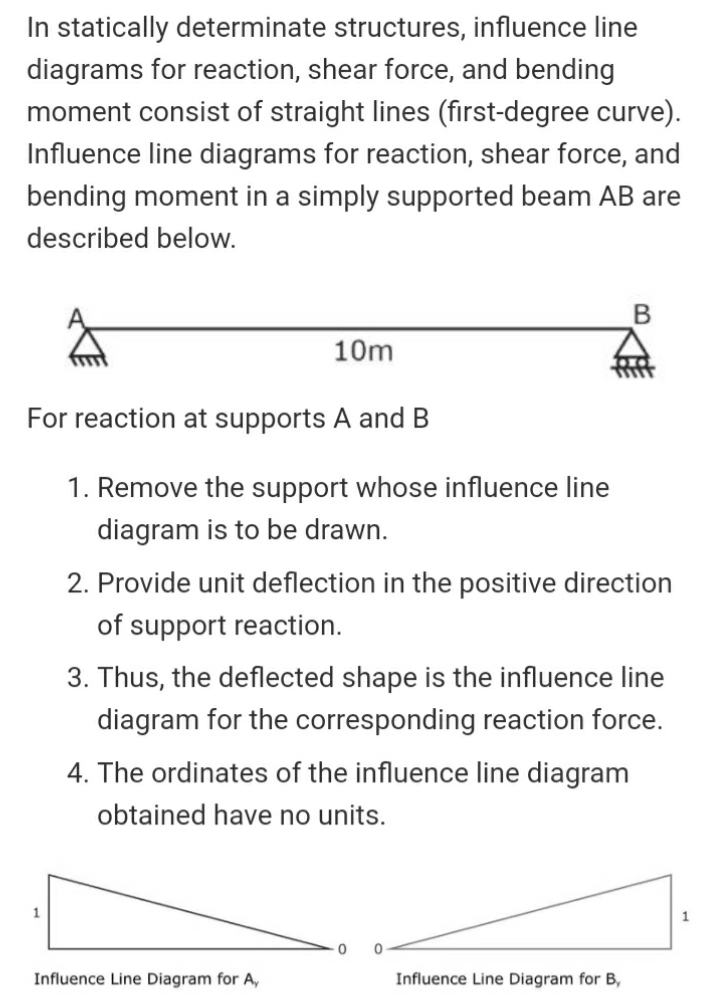Table of Contents
What Is Influence Line Diagram?
Influence line diagram is a technique to represents variation in response, shear, moment, or deflection at a specific point as a focused force moves over the structural member. Influence line is used to indicate the magnitude of response, shear, moment, or deflection for the corresponding point in a structure.
Once the Influence Line Diagram is obtained, it can be determined where on the structure the moving load should be placed to have the greatest effect at the top chosen position. Influence line diagrams for a statically determinate and indeterminate construction, as well as how to calculate the absolute maximum shear and moment in a member, will all be covered in this article.
Influence line diagrams can be used to build structures that can support heavy loads. This idea applies to buildings with distributed loads or a range of concentrated forces such as floor girders and bridge trusses.
Influence line diagrams are used depending on how the loads or reactions affect the span. This is a graphic that shows the reactions, shear forces, and bending moments at any point in any span that you’re interested in learning more about.
Uses Of Influence Line Diagram
In structural engineering, influence line diagrams are used to identify internal forces and deformations caused by external loads in a structure.
At various sites throughout the structure, they can be used to calculate maximum and minimum values of structural reactions, such as deflections, shear forces and bending moments. Influence line diagrams are often used to examine how beams, trusses, and frames react to various loading scenarios.
Additionally, they can be used to design structural components and assess the suitability of already built structures.
Influence Line Diagram for Simply Supported Beams

Influence Line Diagram for Cantilever Beams

Influence Line Diagram For Truss

